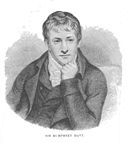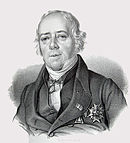Aluminium
Aluminum is a chemical element with the element symbol Al and the atomic number 13. In the periodic table, aluminum belongs to the third main group and to the 13th IUPAC group, the boron group, which was formerly called the group of earth metals. There are numerous aluminium compounds.
Aluminium is a silvery-white light metal. It is the third most abundant element in the Earth's shell, after oxygen and silicon, and the most abundant metal in the Earth's crust.
In materials technology, "aluminium" is understood to mean all materials based on the element aluminium. This includes pure aluminium (at least 99.0 % Al), ultra-pure aluminium (at least 99.7 % Al) and, in particular, aluminium alloys, which have strengths comparable to steel - at only one third of its density.
Aluminium, which occurs in nature almost exclusively in the form of chemical compounds, was discovered in the early 19th century. Industrial mass production began in the early 20th century.
The extraction takes place in aluminium smelters starting from the mineral bauxite, first in the Bayer process, with which aluminium oxide is extracted, and then in the Hall-Héroult process of fused-salt electrolysis, in which aluminium is extracted. In 2016, 115 million tons of alumina (Al2O3) were produced worldwide. From this, 54.6 million tonnes of primary aluminium were extracted.
The metal is very base and reacts with air and water at room temperature to form aluminium oxide when freshly cut. However, this immediately forms a thin layer that is impermeable to air and water (passivation) and thus protects the aluminium from corrosion. Pure aluminium has a low strength; in alloys it is significantly higher. The electrical and thermal conductivity is high, which is why aluminium is used for lightweight cables and heat exchangers.
One of the best known products is aluminium foil. Others include components in vehicles and machinery, electrical wiring, pipes, cans and household items. Aluminium recycling reaches rates of about 40% worldwide.
History
In 1782, Lavoisier was the first to suspect that the alumina (alumina, derived from the Latin alumen 'alum') obtained by Marggraf in 1754 from an alum solution was the oxide of a previously unknown element. In 1825, the Dane Hans Christian Ørsted finally succeeded in producing it by reacting aluminium chloride (AlCl3) with potassium amalgam, with potassium serving as the reducing agent:
Davy, who for a long time had also tried his hand at representing the new element, introduced from 1807 the name variants alumium, aluminum, and aluminium, of which the last two persist side by side in English.
In 1827, Friedrich Wöhler succeeded in obtaining purer aluminium using the same method as Ørsted, but using metallic potassium as a reducing agent. Henri Étienne Sainte-Claire Deville refined the Wöhler process in 1846 and published it in a book in 1859. This improved process increased the yield of aluminium extraction, and as a result the price of aluminium, which had previously been higher than that of gold, fell to a tenth within ten years.
In 1886, Charles Martin Hall and Paul Héroult independently developed the electrolysis process named after them for the production of aluminium: the Hall-Héroult process. In 1889, Carl Josef Bayer developed the Bayer process, named after him, for isolating pure aluminium oxide from bauxites. Aluminium is still produced on a large scale using this principle today.
At the end of the 19th century, the metal was held in such high esteem that metal ships made of it were christened Aluminia.
Occurrence
With a share of 7.57 percent by weight, aluminium is the third most common element in the earth's crust after oxygen and silicon and thus the most common metal. However, due to its base metal character, it occurs practically exclusively in bound form. The largest quantity is found chemically bound in the form of aluminosilicates, in which it occupies the position of silicon in oxygen tetrahedra in the crystal structure. These silicates are, for example, a component of clay, gneiss and granite.
More rarely, alumina is found in the form of the mineral corundum and its varieties ruby (red) and sapphire (colorless, various colors). The colours of these crystals are based on admixtures of other metal oxides. Corundum has the highest aluminium content of any compound, at almost 53 percent. The even rarer minerals akdalaite (about 51 percent) and diaoyudaoite (about 50 percent) have a similarly high aluminum content. A total of 1156 aluminium-bearing minerals are known to date (as of 2017).
The only economically important raw material for aluminium production is bauxite. Deposits are located in southern France (Les Baux), Guinea, Bosnia and Herzegovina, Hungary, Russia, India, Jamaica, Australia, Brazil and the United States. Bauxite contains about 60 percent aluminum hydroxide (Al(OH)3 and AlO(OH)), about 30 percent iron oxide (Fe2O3), and silicon dioxide (SiO2).
In the production process, a distinction is made between primary aluminium, also known as primary aluminium, which is extracted from bauxite, and secondary aluminium, which is extracted from aluminium scrap. Recycling requires only about 5 percent of the energy of primary extraction.
Search within the encyclopedia


